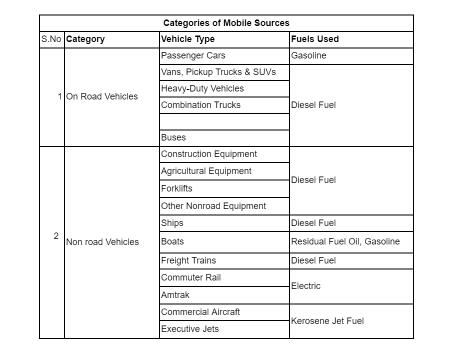Mobile Combustion
What is Mobile Combustion?
The emissions of burning fuels in company-owned and controlled mobile (transport) sources, such as vehicles, trucks, buses, and trains are known as mobile combustion emissions. This process emits greenhouse gasses (GHGs) such as methane (CH4), nitrous oxide (N2O), and carbon dioxide (CO2), into the atmosphere. Mobile combustion sources encompass a wide range of vehicles and equipment utilized for transportation and various operations. These transport vehicles rely on conventional fuel sources for propulsion, and GHG emissions result from the combustion of these fossil fuels.. There are two primary categories into which these sources fall, according to the vehicle properties.
On-Road Vehicles
On-road vehicles include transportation vehicles used on public roads, such as company owned employee transportation vehicles and distribution trucks. These vehicles, owned or operated directly by the processing company, contribute to mobile combustion emissions. Statistical analysis emphasizes the significance of owned company product distribution trucks as primary sources of mobile emissions for dairy processors.
Off-Road Vehicles, Engines, and Equipment
Off-road vehicles, engines, and equipment are utilized for various purposes and applications outside of public road transportation. This category encompasses a diverse range of machinery and equipment, including but not limited to agricultural machinery, construction equipment, mining vehicles, marine vessels, and engines used in off-road operations.

Eg. if an organization owns and maintains a fleet of cars for its operational needs, the industry will classify all vehicles within the Scope 1 Mobile Combustions category. The fuel consumption across all vehicles will serve as the activity data for calculating emissions from mobile combustion.
